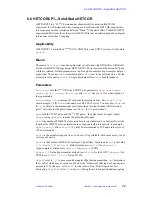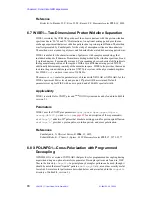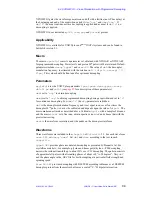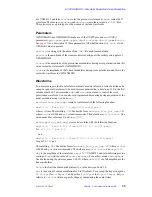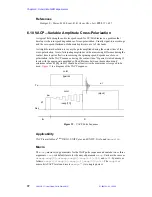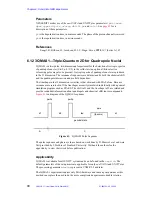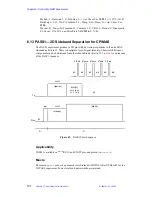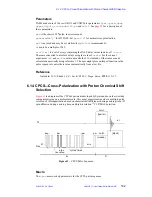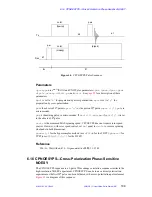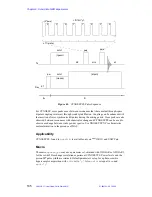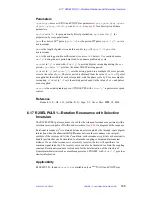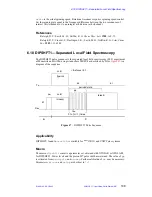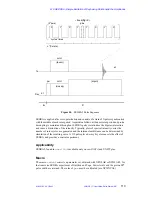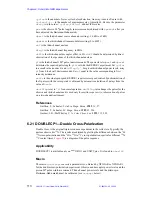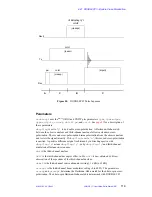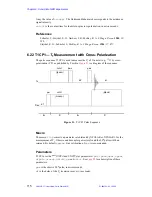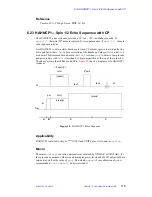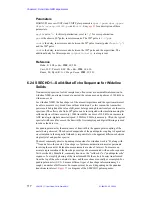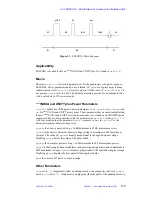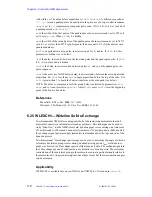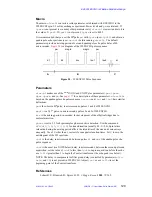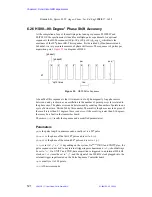
6.17 R2SELPULS1—Rotation Resonance with Selective Inversion
01-999162-00 C0402
VNMR 6.1C User Guide: Solid-State NMR
106
Parameters
cpnoesyps
uses
UNITY
INOVA and UNITYplus parameters
tpwr
,
tpwrm
,
dpwr
,
cppwr
,
dipolr
,
crossp
,
dblvl2
,
pw
, and
cntct
. See
for a description of these
parameters.
xpol
is set to
'n'
for preparation by direct polarization;
xpol
is set to
'y'
for
preparation by cross-polarization.
pw
is the observe 90°
°
pulse (
xpol='n
'), or the proton 90
°
pulse (
xpol='y'
).
pw
is in
microseconds.
pwx
is the length of pulses two and three and is to
pw
(if
xpol='n
').
pwx
is in
microseconds.
mix
is the mixing period in milliseconds (see also
rfdr
below). Use caution because
dm='y'
during the mix period may lead to an unacceptable duty cycle.
sync
set to
'y'
is used with
rfdr='y'
to provide dipolar recoupling during the
mix
period.
sync
set to
'n'
provides the usual NOESY mixing period.
rfdr
set to
'y'
(set
sync='y'
) sets the mixing period to a multiple of 8 rotor periods,
close to the value of
mix
. The rotor period is obtained from the value of
srate
.
π
pulses
are applied at the middle of each rotor period, with the phase cycle 'xy8' to cause dipolar
recoupling.
rfdr
set to
'n'
sets the mixing period equal to the value of
mix
and pulses
are not applied.
srate
is the actual spinning speed. CPNOESYPS with
rfdr='y'
requires rotor speed
control.
Reference
Bennett, A. E.; Ok, J. H.; Griffin, R. G.; Vega, S. J. Chem. Phys. 1992, 96, 8624.
6.17 R2SELPULS1—Rotation Resonance with Selective
Inversion
The R2SELPULS1 pulse sequence is used for the rotational resonance experiment with a
selection inversion pulse of Griffin and coworkers.
is a diagram of the sequence.
Rotational resonance (r
2
) is obtained between nuclei coupled by the through-space dipolar
interaction when the chemical shift difference between the resonances is an integral
multiple of the rotor speed. At the r
2
condition, each resonance is split into a characteristic
doublet pattern that can be simulated to obtain the coupling constant and internuclear
distance. If one of the resonances is selectively inverted, the two will equilibrate to a
common signal intensity. The recovery curve can also be simulated to obtain the coupling
constant. Rotational resonance is often used for the determination of the structure of
biomolecular materials such as membrane proteins. CPNOESY with
rfdr='y'
provides
similar information.
Applicability
R2SELPULS1, found in
userlib
, is available only on
UNITY
INOVA and UNITYplus.

